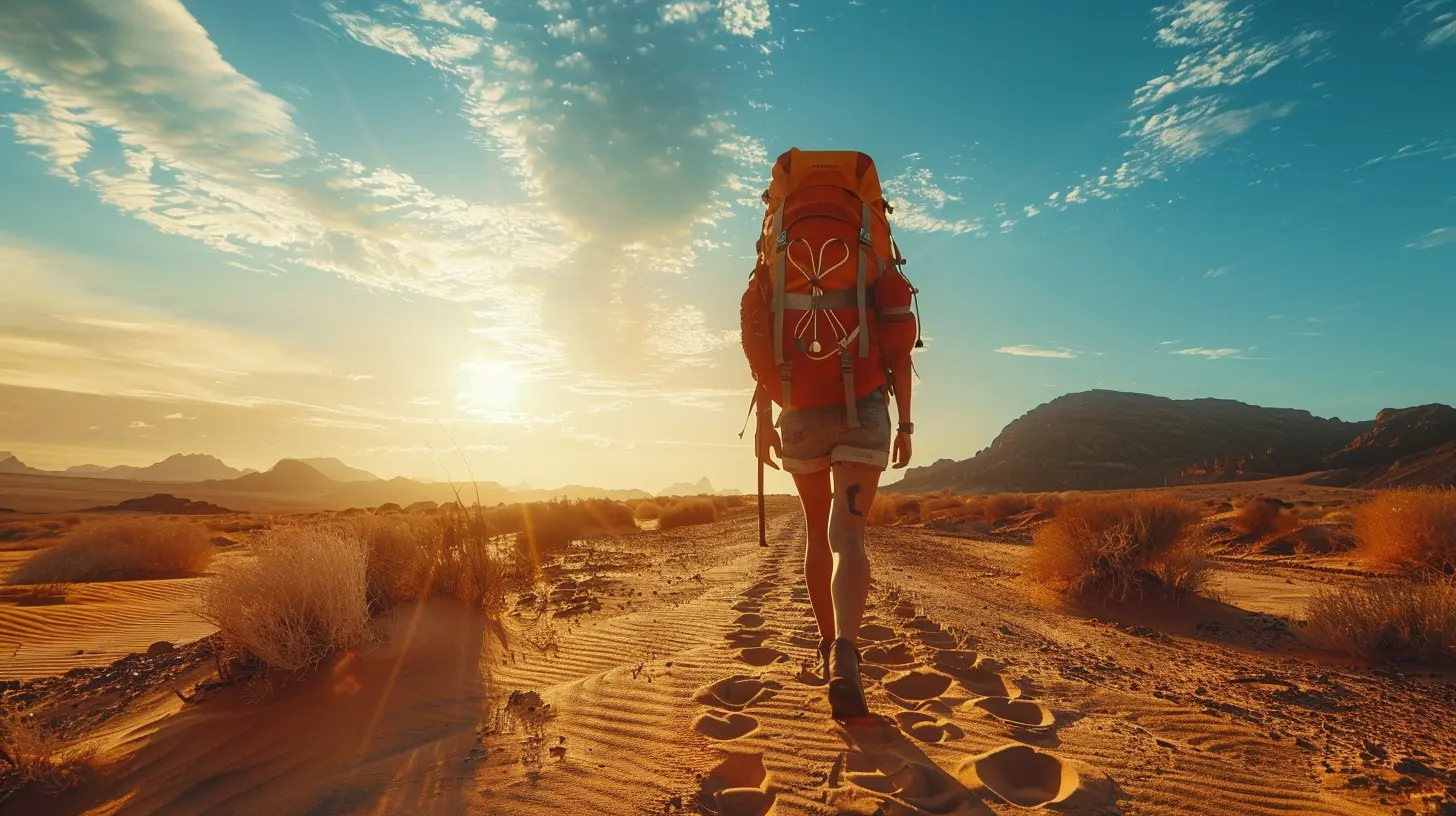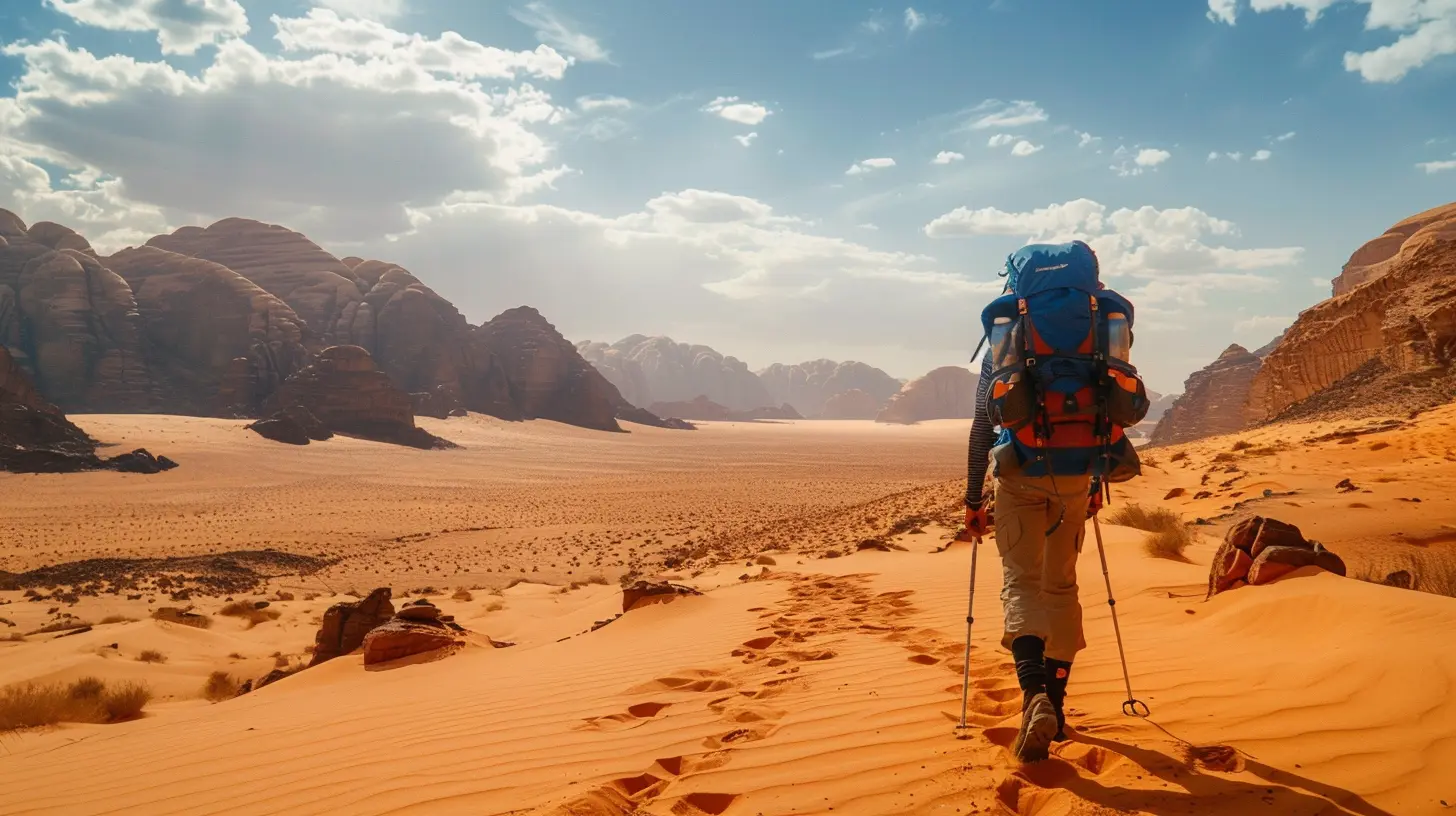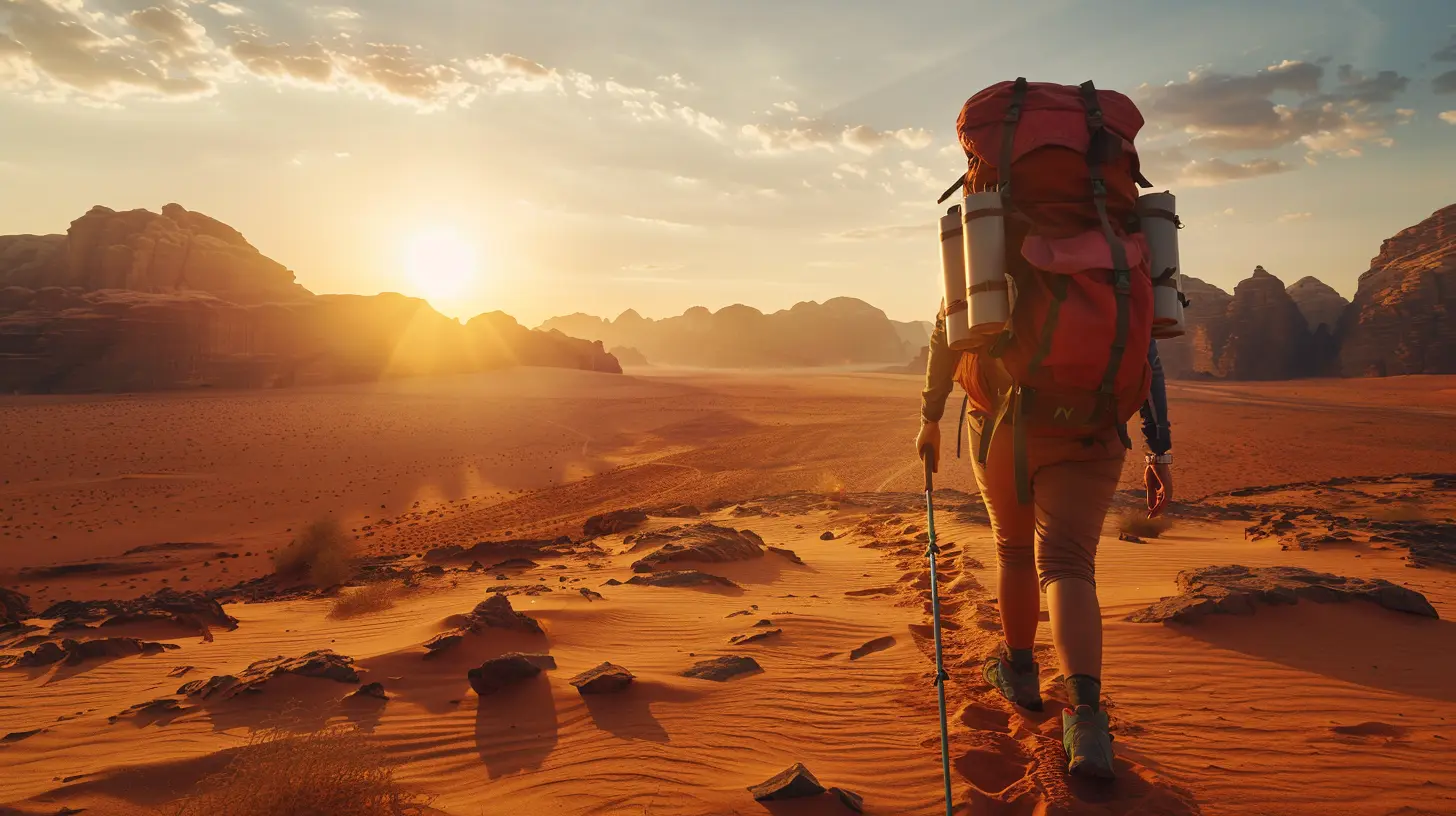Backpacking in the Desert: What You Need to Survive and Thrive
21 November 2025
Backpacking in the desert is unlike any other adventure. The vast openness, the golden sands stretching to the horizon, and the sheer silence—it’s an experience that humbles you. But don’t be fooled. The desert is as harsh as it is beautiful, and if you’re not prepared, it will chew you up and spit you out.
So, how do you survive AND thrive in the desert? In this guide, we’ll break down everything you need to know, from essential gear to survival tips. 
Why Backpack in the Desert?
Let’s be real—most people choose mountains, forests, or beaches for their backpacking adventures. The desert? Not so much. But here’s why it’s worth considering:- Stunning Landscapes – The desert’s beauty is surreal. Towering sand dunes, rugged canyons, and vast, star-filled night skies make for an unforgettable experience.
- Solitude & Peace – If you want to escape the crowds and reconnect with yourself, the desert is the perfect place.
- Challenging & Rewarding – Conquering the desert is not easy, but the sense of accomplishment? Totally worth it.
Of course, none of this matters if you're not prepared. So, let's dive into what you need to make it out alive. 
The Essentials for Desert Backpacking
1. Water: The Non-Negotiable
Let’s cut to the chase—you’ll need a LOT of water. Unlike other environments where natural water sources are common, the desert is unforgiving. Dehydration can sneak up on you fast.How Much Water Do You Need?
A general rule: at least 4 liters per person per day. If you’re hiking in extreme heat, bump that up to 6 liters.Carrying Water
- Hydration bladders – Easy access while hiking.- Water bottles – Always bring backups in case your hydration bladder fails.
- Water filters or purification tablets? Usually unnecessary unless you know there’s a water source.
2. Clothing: Dressing for the Desert
You might think wearing shorts and a tank top makes sense, but in the desert, that’s a rookie mistake.What to Wear
- Long-sleeved, lightweight clothing – Protects your skin from the sun while keeping you cool (yes, really).- Wide-brimmed hat – Keeps the sun off your face and neck.
- Sunglasses – The desert sun is blinding. Protect your eyes.
- Gaiters or high socks – Keeps sand from invading your boots.
And forget about dark colors! Light-colored clothing helps reflect sunlight and keeps you cooler.
3. Footwear: Boots Over Sneakers
The desert terrain is no joke—sharp rocks, loose sand, and scorching surfaces can punish your feet.Best Footwear for Desert Hiking
- Hiking boots with ankle support – Prevents ankle rolls and keeps out debris.- Breathable material – Your feet will sweat like crazy, so pick boots that offer ventilation.
- Moisture-wicking socks – Prevents blisters and keeps feet dry.
Pro tip: Sand is sneaky. No matter what you do, it’ll find its way into your shoes. Shake them out regularly.
4. Sun Protection: Your Shield Against Heat
Sunburn in the desert is no joke—it happens FAST. A few hours exposed without protection, and you’ll be feeling like a roasted marshmallow.Must-Have Sun Protection
- Sunscreen (SPF 50+ and sweat-resistant) – Reapply every few hours.- Lip balm with SPF – Sunburned lips? Miserable.
- Lightweight gloves – Yes, even your hands can burn.
And don’t fall into the trap of thinking you’re fine just because it’s cloudy. The desert sun doesn’t play fair. 
Surviving Desert Conditions
5. Handling Extreme Temperature Swings
One of the biggest surprises for first-time desert backpackers? The temperature drop at night.During the day, it can hit 100°F (38°C), but at night? It can plummet to near freezing.
How to Prepare
- Bring a warm sleeping bag (rated for 20°F/-6°C).- Wear layers – A fleece or insulated jacket for nighttime is a must.
- Be mindful of hypothermia – It’s not just a cold-weather issue.
6. Finding Shelter & Staying Cool
Avoid hiking during the hottest part of the day (typically between 12 PM and 4 PM). Instead, seek shade and rest during peak heat.Best Shelter Options
- Lightweight tent with ventilation – Keeps bugs out and offers protection from wind.- Tarp for shade – A lifesaver when there’s no natural shade.
- Emergency bivy – Good backup if temperatures drop too low.
7. Navigation: Don’t Get Lost
Getting lost in the desert is a deadly mistake. With vast, featureless landscapes, it’s easy to lose your bearings.How to Stay on Track
- Maps & compass – Don’t rely solely on GPS (batteries die fast in extreme heat).- Mark your route – Cairns, brightly colored tape, or even sticks can help guide you back.
- Track the sun – It moves from east to west, which can serve as a basic directional guide.

Dealing with Desert Wildlife
Think deserts are lifeless? Think again. From venomous snakes to sneaky scorpions, you’re not alone out there.Common Desert Critters to Watch Out For
- Rattlesnakes – Give them space. If you hear a rattle, stop moving immediately.- Scorpions – Shake out your boots and sleeping bag before use.
- Coyotes – Unlikely to bother you, but avoid leaving food out.
A good rule: Look before you touch. That rock you want to sit on? A scorpion might be hanging out underneath.
Fueling Up: Food for Desert Backpacking
You’ll need lightweight, high-energy foods that don’t require much water to prepare.Best Foods for the Desert
- Nuts & trail mix – High in protein and healthy fats.- Energy bars – Compact and calorie-dense.
- Dehydrated meals – Lightweight but require boiling water.
- Electrolyte packets – Helps replenish salt lost from sweating.
Avoid salty foods unless you increase water intake. Too much salt without enough hydration can dehydrate you faster.
Final Words of Advice
Backpacking in the desert isn’t for the faint of heart, but with the right preparation, it’s one of the most rewarding experiences you’ll ever have. Respect the environment, plan your route carefully, and always bring more water than you think you need.Because in the desert, survival isn’t just about endurance—it’s about smart decision-making. Now, go and embrace the desert adventure!
all images in this post were generated using AI tools
Category:
BackpackingAuthor:

Kelly Hall

